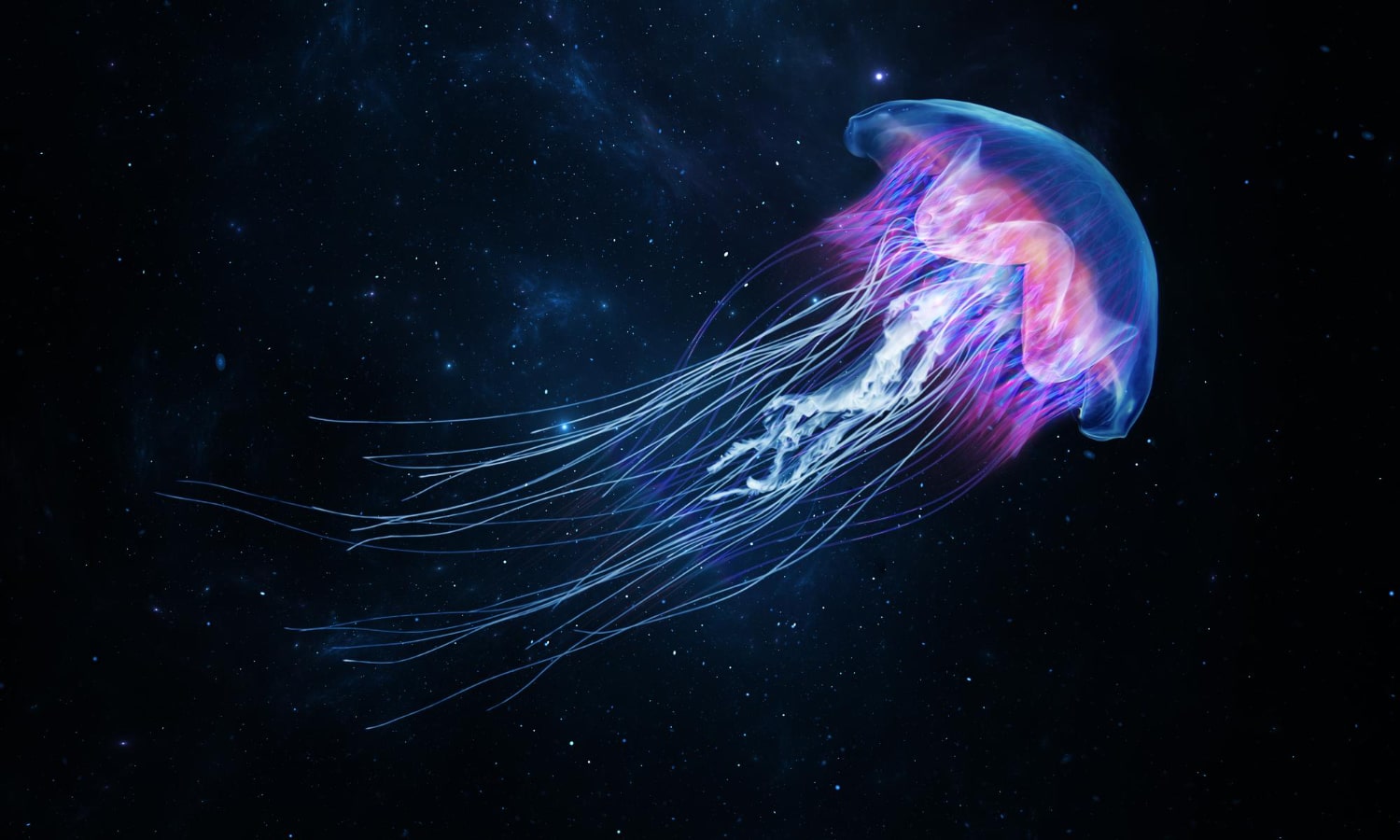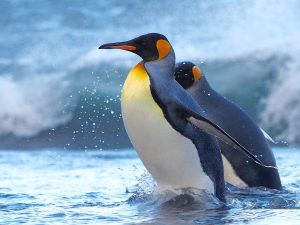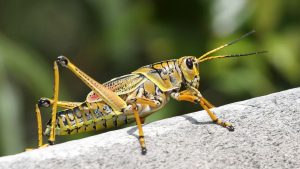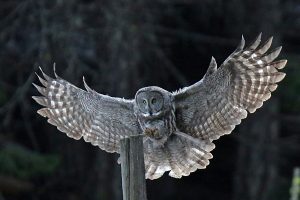
30 interesting facts about jellyfish
- 👁️ 328
Jellyfish, intriguing and enigmatic, inhabit all the world’s oceans, from shallow coastal waters to the deep sea. Ranging in size from a millimetre to more than two metres in diameter, these marine creatures have a simple, translucent body but a rather complex existence. Renowned for their graceful movement and often spectacular bioluminescent displays, jellyfish have fascinated humans for ages. Despite their delicate appearance, some species are equipped with potent venom, making them formidable ocean dwellers.
- Jellyfish are among the oldest living creatures on Earth. Fossil evidence suggests they have been around for more than 500 million years, predating both dinosaurs and sharks.
- They are not true fish. Instead, they belong to a group of animals known as Cnidaria, which also includes sea anemones and corals.
- Their bodies are composed of approximately 95% water, making them blend in with their watery environment seamlessly.
- Some species of jellyfish are bioluminescent, which means they can produce their own light and glow in the dark.
- The ‘immortal’ jellyfish, Turritopsis dohrnii, has the ability to revert its cells back to their earliest form and grow anew, potentially making it biologically immortal.
- Jellyfish do not have brains, hearts, or bones. Instead, they have a network of nerves known as a ‘nerve net’ which helps them respond to their environment.
- They catch their prey with tentacles that contain specialised cells called cnidocytes. Each cnidocyte has a tiny, harpoon-like structure that can inject venom to paralyse prey.
- The largest species of jellyfish is the lion’s mane jellyfish (Cyanea capillata). Its bell can reach a diameter of up to 2.5 metres, and its tentacles can grow to a staggering length of 36.5 metres.
- A group of jellyfish is often referred to as a ‘bloom,’ ‘swarm,’ or ‘smack.’
- Jellyfish play a crucial role in the ocean food chain. They feed on plankton, small fish, and sometimes other jellyfish, and are prey for larger fish, turtles, and even some birds.
- Some jellyfish species have eyes. Box jellyfish, one of the most venomous creatures in the world, has clusters of eyes on each side of the box-like bell, some of which can form images, much like our own eyes.
- Not all jellyfish are harmful to humans. Many species have venom that is too weak to harm people or their stinging mechanism is not powerful enough to penetrate human skin.
- Jellyfish reproduction involves a complex lifecycle that includes both sexual and asexual phases. They start life as stationary polyps and later metamorphose into the floating medusa form we recognise.
- Their numbers are increasing in some parts of the world, a phenomenon known as a “jellyfish bloom”. It’s thought to be due to factors like global warming, overfishing, and nutrient pollution.
- Some species of jellyfish can be quite large, but others are very small. The smallest jellyfish is the Irukandji jellyfish, which is only about the size of a fingernail, yet its sting can be fatal.
- Some jellyfish live in freshwater. These freshwater species are less common than marine species and are relatively small and colourless.
- A number of animals, such as the jellyfish-eating sea slug, can eat jellyfish and absorb their venom. This allows them to use it for their own defence.
- Jellyfish have been the inspiration for many biomimetic designs (mimicking nature for technology), including energy-efficient propulsion systems in naval engineering.
- Jellyfish are considered a delicacy in some Asian countries. They are often consumed in salads or main dishes after being desalted and processed.
- The lifespan of a jellyfish varies greatly depending on the species. Some live for only a few hours or days, while others can live for several years.
- The box jellyfish’s venom is among the most deadly in the world, and their stings can cause heart failure in humans.
- Some types of jellyfish have symbiotic relationships with other organisms. For example, the spotted jellyfish often provides a home for small fish and shrimps inside its bell, which gives them protection from predators.
- In contrast to most jellyfish that drift with the ocean currents, box jellyfish can actively swim against the current and exhibit directional control.
- Despite their apparent simplicity, jellyfish are capable of basic learning, orientation and have active behavioural responses, suggesting a higher degree of sophistication than previously assumed.
- Some species of jellyfish, like the moon jellyfish, have been launched into space for scientific research to study the effects of microgravity on their life cycle and behaviour.
- Certain species of jellyfish exhibit sexual dimorphism, which means males and females have noticeably different characteristics beyond their reproductive organs.
- The colour of a jellyfish often relates to its diet. Some jellyfish can contain photosynthetic symbiotic organisms in their tissues and are often greenish or brownish.
- Jellyfish are composed of three layers: an outer layer, called the epidermis; a middle layer made of a thick, elastic, jelly-like substance called mesoglea; and an inner layer, called the gastrodermis.
- Some jellyfish are ‘solar-powered.’ They host algae in their tissues, which photosynthesise and produce sugar, part of which is consumed by the jellyfish.
- Despite their fragile bodies, jellyfish fossils have been found dating back hundreds of millions of years, thanks to rapid burial and sediment build-up which helps preserve their forms.
The ethereal beauty and complex biology of jellyfish make them one of the ocean’s most compelling inhabitants. Their evolutionary success, evident in their ancient lineage and wide distribution, attests to the incredible adaptability of these simple yet fascinating organisms. Even as we continue to explore their diverse species and remarkable traits, jellyfish remind us of the ocean’s enduring mysteries and the remarkable life it harbours.











